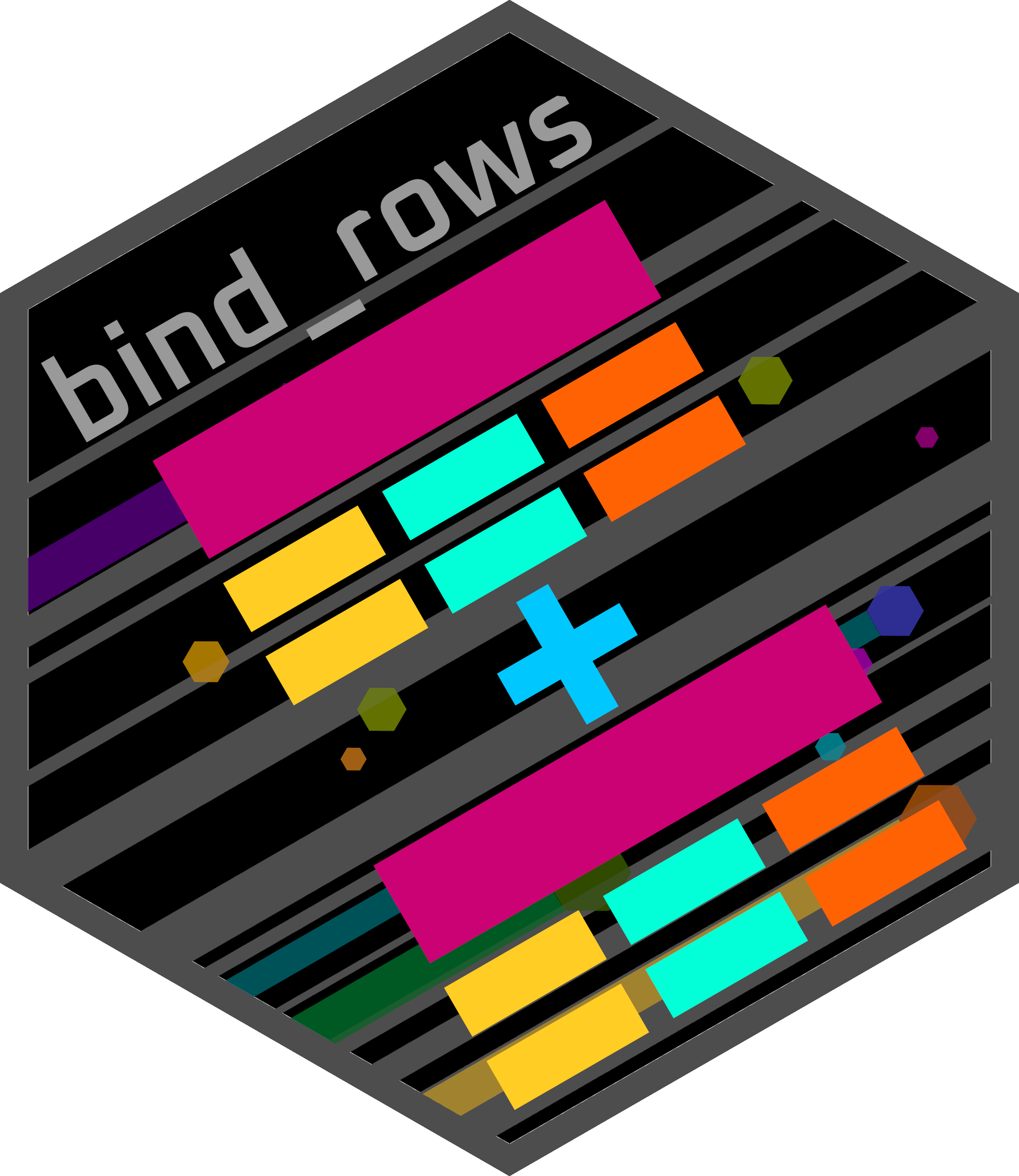num_tbl <- tibble::tibble(x = 1:3, y = 4:6, z = 7:9)
num_tbl_2 <- tibble::tibble(aa = 11:13, ab = 14:16, ac = 17:19)
num_tbl_3 <- tibble::tibble(x = 4:6, y = 7:9, z = 10:12)Bind tibbles
Tibbles can be bound together to create a new tibble with:
dplyr::bind_cols(): Bind tibbles side by side.dplyr::bind_rows(): Bind tibbles on top of each other.
Create example tibbles
Before demonstrating various examples we will create a few tibbles.
Bind by columns

Bind 2 or more tibbles by columns. In other words you will end up with more columns and the same amount of rows.
We will bind the two following tibbles by columns.
Note that the two tibbles must have the same amount of rows. Additionally, they should have completely unique column names compared to each other.
num_tbl# A tibble: 3 × 3
x y z
<int> <int> <int>
1 1 4 7
2 2 5 8
3 3 6 9num_tbl_2# A tibble: 3 × 3
aa ab ac
<int> <int> <int>
1 11 14 17
2 12 15 18
3 13 16 19Column bind
num_tbl_col_bound <- dplyr::bind_cols(num_tbl, num_tbl_2)
num_tbl_col_bound# A tibble: 3 × 6
x y z aa ab ac
<int> <int> <int> <int> <int> <int>
1 1 4 7 11 14 17
2 2 5 8 12 15 18
3 3 6 9 13 16 19Bind by rows

Bind 2 or more tibbles by rows with dplyr::bind_rows(). In other words you will end up with more rows and the same amount of columns.
We will bind the two following tibbles by rows.
Note that the two tibbles must have the same amount of columns. Additionally, they should have the same column names.
num_tbl# A tibble: 3 × 3
x y z
<int> <int> <int>
1 1 4 7
2 2 5 8
3 3 6 9num_tbl_3# A tibble: 3 × 3
x y z
<int> <int> <int>
1 4 7 10
2 5 8 11
3 6 9 12Row bind
num_tbl_row_bound <- dplyr::bind_rows(num_tbl, num_tbl_3)
num_tbl_row_bound# A tibble: 6 × 3
x y z
<int> <int> <int>
1 1 4 7
2 2 5 8
3 3 6 9
4 4 7 10
5 5 8 11
6 6 9 12